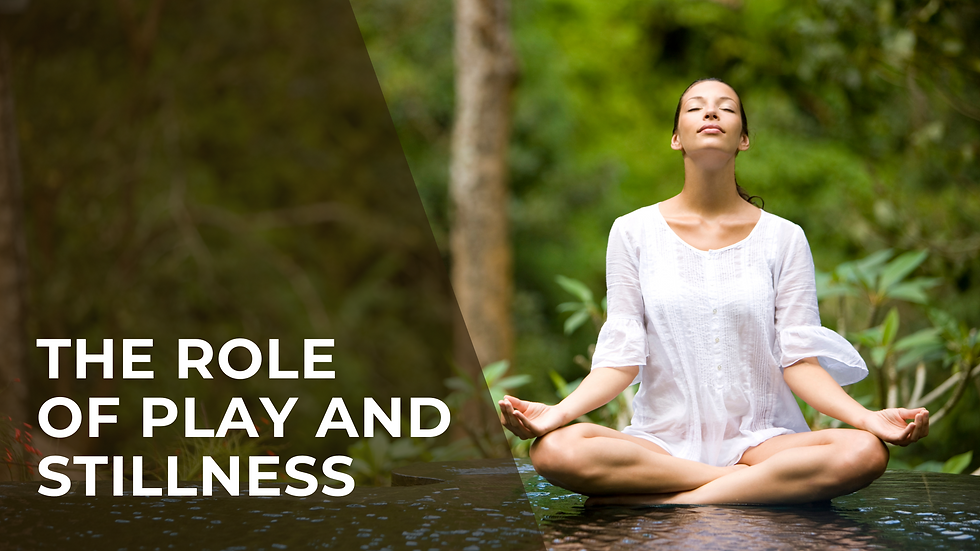
“The nervous system thrives in community, but it heals in stillness.”
The rhythms of our lives are dictated by the state of our nervous systems. When we feel safe and connected, our bodies operate in what polyvagal theory calls a "ventral vagal" state—the sweet spot of social engagement and emotional regulation. But when stress hits, we can slip into fight-or-flight (sympathetic activation) or even shutdown (dorsal vagal state).
How do we create space for connection, balance, and resilience? Through practices that foster play, stillness, and social engagement—activities that bring us back to ventral vagal states.
Understanding Polyvagal Theory
Developed by Dr. Stephen Porges, polyvagal theory explains how the vagus nerve influences our ability to connect with others, regulate emotions, and respond to stress. The vagus nerve acts as a communication superhighway between the brain and the body, governing three primary states:
Ventral Vagal State: The state of safety and connection, where we feel calm, engaged, and able to connect socially.
Sympathetic State: The fight-or-flight mode, activated by perceived threats.
Dorsal Vagal State: The shutdown or freeze response, often triggered by overwhelm or prolonged stress.
Our goal is not to avoid stress entirely but to develop the flexibility to return to ventral vagal states when life throws us challenges.
The Role of Play and Stillness
Play and stillness might seem like opposites, but both are essential for nervous system health. Here’s why:
Play Promotes Social Engagement: Activities like laughing, dancing, or playing games naturally activate the ventral vagal state by fostering connection and joy. These moments of lightheartedness tell your body it’s safe, allowing you to explore creativity and build relationships.
Stillness Encourages Rest and Repair: Quiet practices like deep breathing, mindfulness, and gentle yoga help regulate the nervous system by reducing sympathetic overactivation. Stillness creates a sense of groundedness, allowing the body to recover and reset.
The Social Aspect of Polyvagal Health
Humans are wired for connection, and our nervous systems crave social interaction. Engaging with others in meaningful ways can:
Enhance Vagal Tone: Positive social interactions stimulate the vagus nerve, improving its tone and increasing resilience to stress.
Build Safety in Relationships: Eye contact, shared laughter, and physical touch strengthen bonds and reinforce feelings of safety.
Reinforce Ventral Vagal States: Consistent positive interactions help your nervous system spend more time in a calm and connected state.
Practical Steps to Cultivate Connection
Prioritize Play
Schedule time for activities that make you laugh or bring joy, whether it’s playing with your kids, dancing in the kitchen, or trying a new creative hobby.
Incorporate Restorative Practices
Add moments of stillness to your day through breathwork, meditation, or even a quiet walk in nature. These practices calm the nervous system and encourage self-regulation.
Engage Socially
Seek out meaningful interactions, like sharing a meal with loved ones or joining a group activity that aligns with your interests. Remember, even small moments of connection matter.
Practice Co-Regulation
Spend time with people who help you feel safe and grounded. Their calm presence can have a soothing effect on your nervous system.
Move Your Body
Gentle movement, such as yoga, tai chi, or even playful activities like tossing a ball, supports nervous system flexibility and helps you shift between states with ease.
The Gut-Brain Connection
Your gut microbiome also plays a significant role in nervous system regulation. The vagus nerve directly links the gut and brain, meaning that supporting gut health can enhance emotional and social well-being. Focus on:
Fermented Foods: Yogurt, kimchi, and sauerkraut support beneficial gut bacteria, which influence neurotransmitter production.
Prebiotics: Foods like garlic, onions, and bananas feed the good bacteria that support vagus nerve function.
Stress-Reducing Nutrition: A balanced diet rich in whole foods helps stabilize blood sugar and reduce the inflammatory effects of stress.
Final Thoughts
Balancing the nervous system is not about avoiding stress but about learning to move through states with resilience and grace. By incorporating practices that emphasize play, stillness, and connection, you can cultivate a sense of safety and harmony within yourself and with others. This isn’t just about managing stress; it’s about thriving—living in a state where joy, connection, and creativity come naturally.
So, the next time life feels overwhelming, take a deep breath, share a laugh, or simply sit quietly. Your nervous system will thank you.


Comentarios